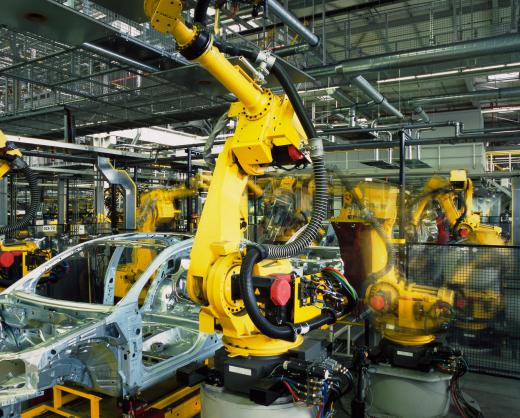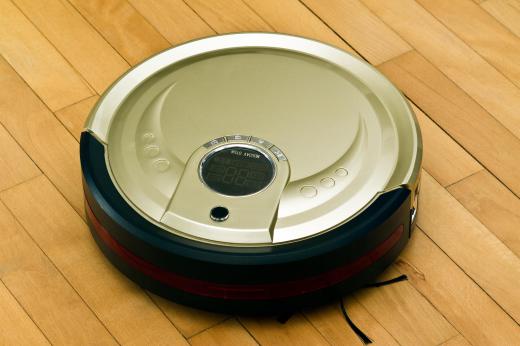What are Some Significant Recent Advances in Robotics?
 Michael Anissimov
Michael Anissimov
Robotics is a hot field which continually makes the news. Notable recent advances include a robotic arm so finely calibrated that it can pick up a light bulb without breaking it (Shadow Hand®), robotic cars that drive themselves through urban environments complete with traffic (DARPA Urban Challenge), prosthetic arms controlled by brain-computer interfaces (BrainGate®), and humanoid robots that can climb stairs and be guided by a person holding their hand (Asimo®).
Billions of dollars are spent worldwide every year on robotics research. Unfortunately, robotics has not progressed as fast as many anticipated in the 1980s, and home robotics is relatively limited, consisting of vacuum robots like Roomba® and its pool-washing cousin, Scooba®. Entertainment bots such as RoboSapien® and Pleo® are popular, with many others on the way.

The most advanced robots are used by the US military. PackBot®, made by the same company that makes Roomba®, iRobot Corp., serves as a robotic pack mule. Minesweeper robots have been used regularly in the Iraq war to clear the road of improvised explosive devices. The SWORDS robot, a tracked recon/combat robot has also been used in Iraq, and its cost is declining to the cost of training a soldier, suggesting that in the not-too-distant future, robots may replace human soldiers for tasks not requiring human intelligence or interaction. The Predator series of UAVs (unmanned aerial vehicles) is a self-flying combat unit that is operated using simple remote controls.

In manufacturing, robotic arms are used to automate tasks where economically feasible. The fastest operate many times more quickly than human hands, and often pay for themselves in mere months. The University of Tokyo created a robotic arm so fast that it can catch a baseball thrown at 186 mph. Robotics is routinely used in massively parallel biological research, where hundreds or thousands of micropipettes must be operated simultaneously.
It seems like only a matter of time until the long-awaited integration of robots into society in general, but for now, their most widespread application is in industry and the military.
AS FEATURED ON:
AS FEATURED ON:













Discussion Comments
@Ana1234 - There have already been significant contributions to human life and society by robotic technology. Aside from all the innovations being used in factories and to aid research, there have been some amazing advances in prosthetic science. People can and do have robotic arms now, to replace one that was removed and they will work in the same way that the original one did.
We aren't just inventing stuff for the sake of it, or for some imagined future goal. Most of those recent advances will have immediate applications.
@browncoat - One day we will, no doubt, have robots everywhere that include all of these innovations in one machine, but for the moment it isn't possible, even if you put every single robotics researcher into the same room. These advancements all take millions of dollars worth of research separately, and many of them take a huge amount of space as well. They need to be refined to the point where they are cheap and smaller so they can be integrated into a whole machine, rather than being the singular point of a machine.
Also it's a strange time for robotics, because people expect it to be more advanced than it actually is and don't understand which parts are difficult. It's a huge deal that they've managed to make a robot hand that can handle glass without shattering it. Pressure sensors are difficult to calibrate with that kind of sensitivity.
I find it interesting that all of these innovations seem to be like the disconnected parts of a whole. They will report an advance in robotics when they invent an arm that can move fast, or an arm that can move elegantly, or a pair of wheels that can go up stairs and so forth. But what we really think of as robots are all of these things put together into a single machine that can do all of these things.
I guess this is what happens in real life when you've got people working in different parts of the world and not networking on their discoveries.
Post your comments